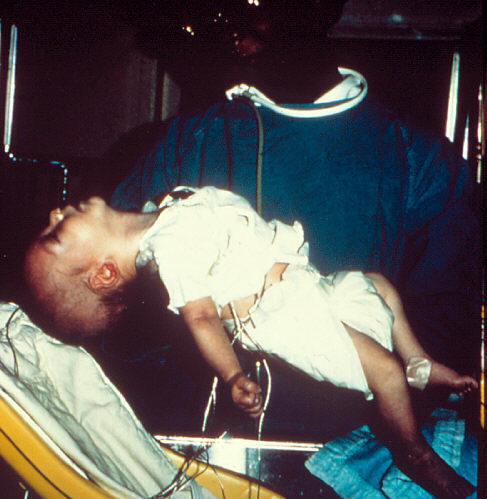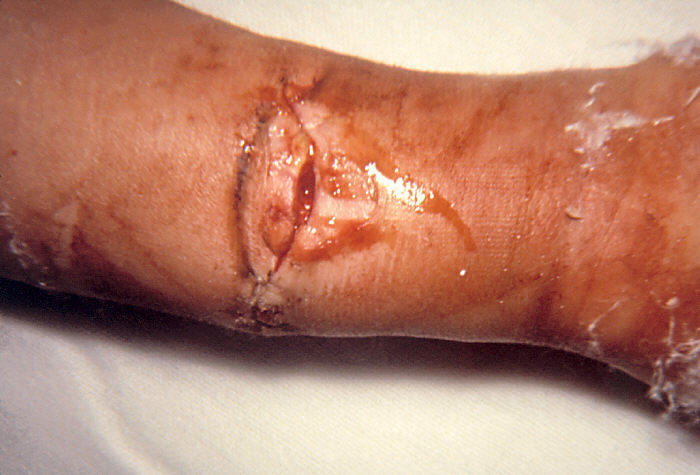Botulism is the disease caused by the neurotoxin produced by Clostridium botulinum. Since it is a toxin that causes the sickness, it is not considered to be an infection, but rather intoxication. There are three main types that affect humans; infant, foodborne, and wound botulism.
Overview
Infant botulism occurs when spores from C. botulinum are swallowed from either ingestion or breathing. This type usually occurs in otherwise healthy children under the age of one and rarely affects older children and adults due to stronger immune systems.
One of the only foods founds to have a relatively high occurrence of C. botulinum spores is honey. This is why it has become a common suggestion to not to feed your infant honey. To take a look at the organism that produces much of the honey in the world, head over to colleague's page on the Honey Bee.
Symptoms
Once ingested, the disease is recognized by constipation, generalized weakness, and various neurological disorders, with the symptoms usually arriving 18 to 36 hours after exposure. Though most cases of infant botulism do require hospital care, with modern medicine, they are rarely fatal.
Foodborne
Botulism

Courtesey of Microsoft Clip Art
Overview
Foodborne botulism occurs after ingesting food contaminated with C. botulinum. Nearly all cases throughout the world can be directly correlated to improper food preservation. Depending on the amount of spores ingested, the severity of the disease can vary greatly. It can be experienced as a minor illness, or a disease that could be fatal within a day’s time.
Symptoms
The severity of the symptoms can be judged by how early they arrive – the sooner, the worse. They can range from visual impairments, loss of normal mouth and throat functions (difficulty in swallowing and speaking), general fatigue and lack of muscle coordination, and respiratory impairment. Gastrointestinal symptoms could include diarrhea, constipation, and abdominal pain. The causes of death from botulism tend to be respiratory failure and airway obstruction, but again with modern technology, the fatality rates from first half of the century have dropped from 50% to 10%.
Overview
Wound botulism occurs when the spores of C. botulinum manage to enter an open wound to enter the body. Because of the general difficulty of this, wound botulism is the rarest of all cases, only counting for 3% of Botulism cases around the globe.
Symptoms
The symptoms of wound botulism are the same as those for foodborne, with the same wide range of severity.
Interestingly enough, even though the toxin produced by the baceria C. botulinum are deadly, applications for it, both medicinally and cosmetically, have been discovered. Check them out on the Botulism page!

